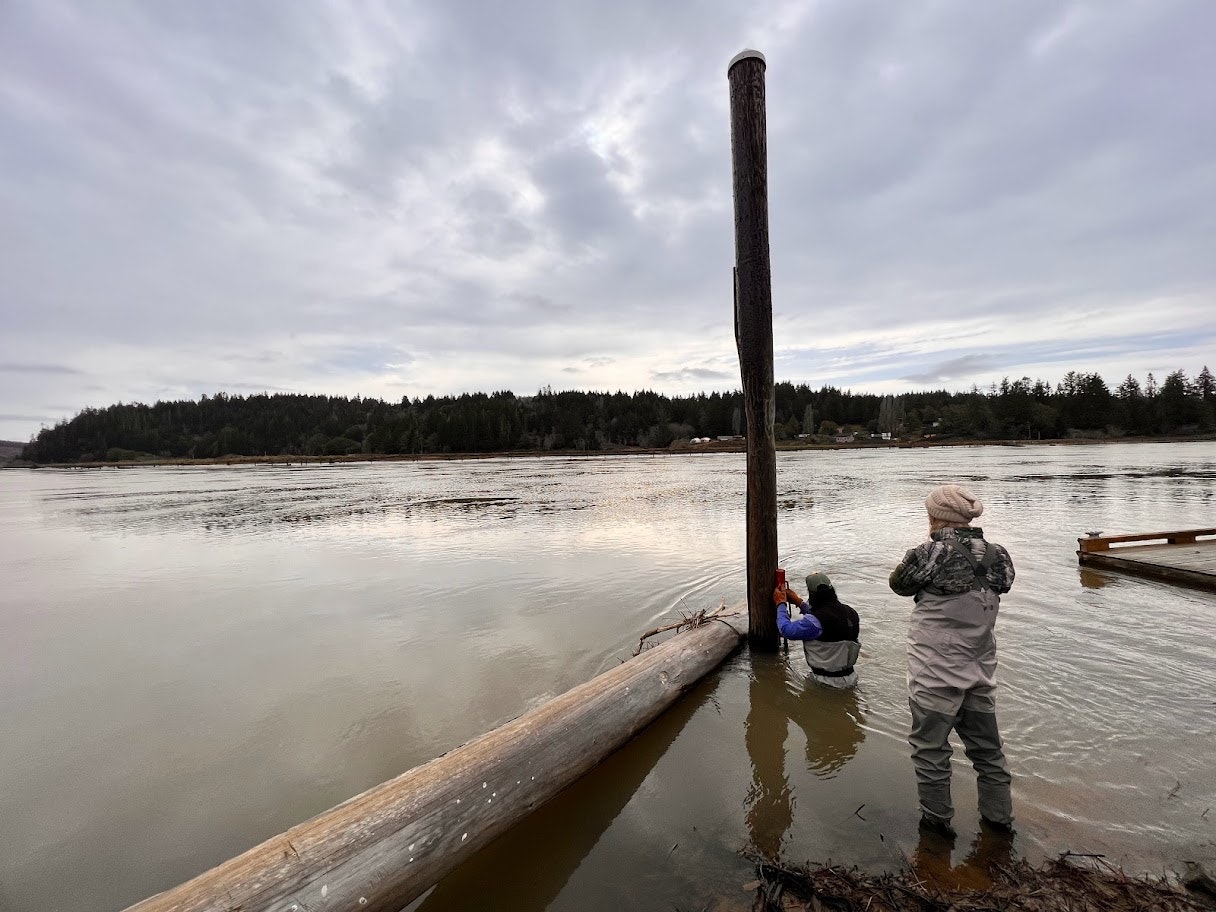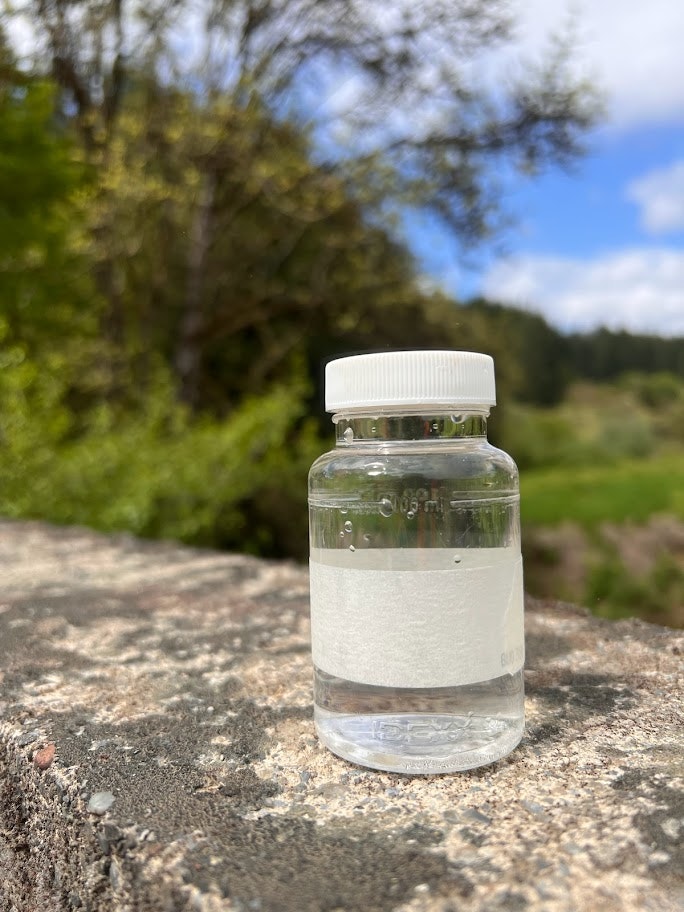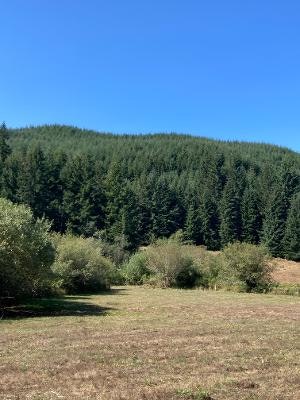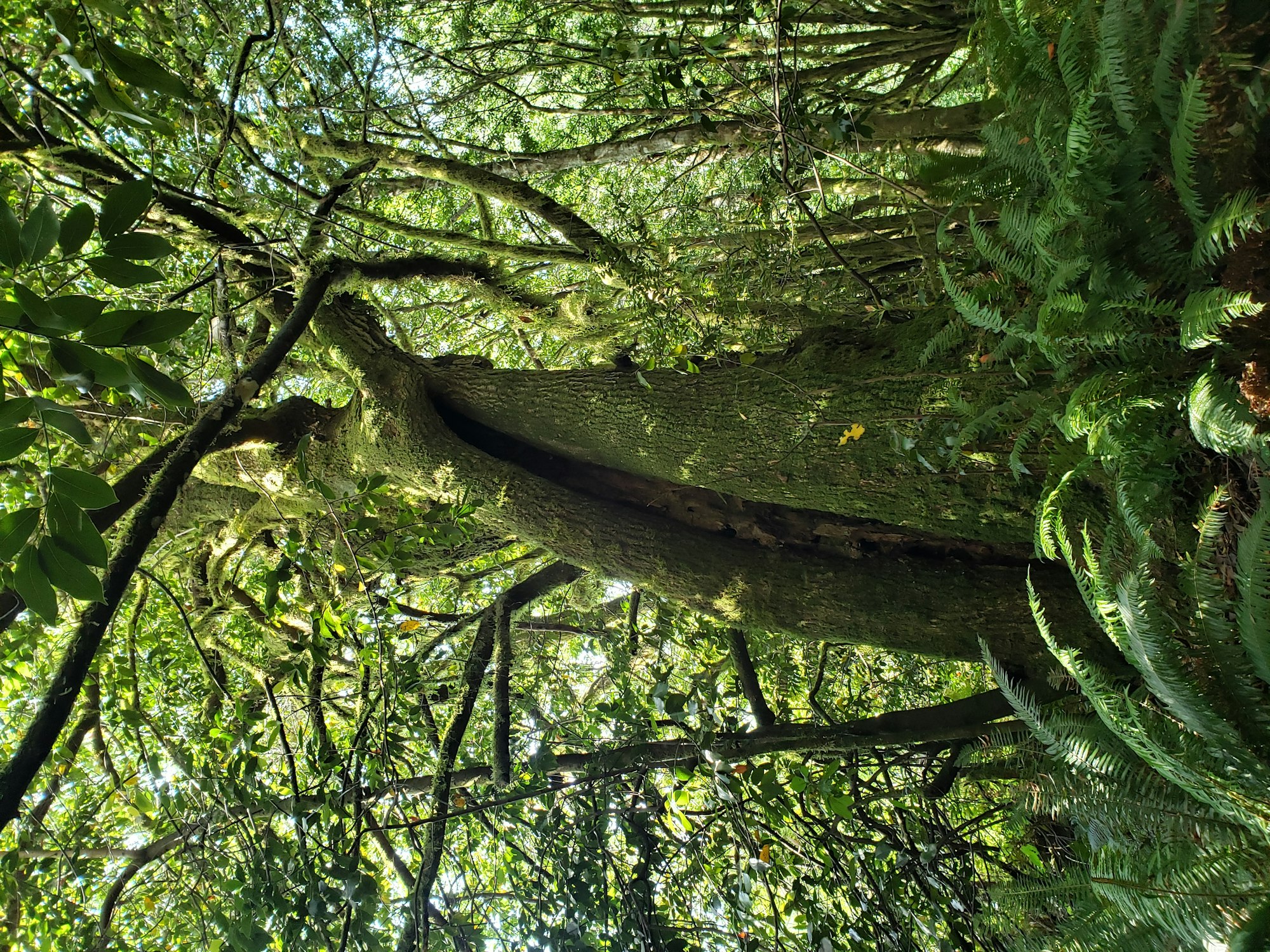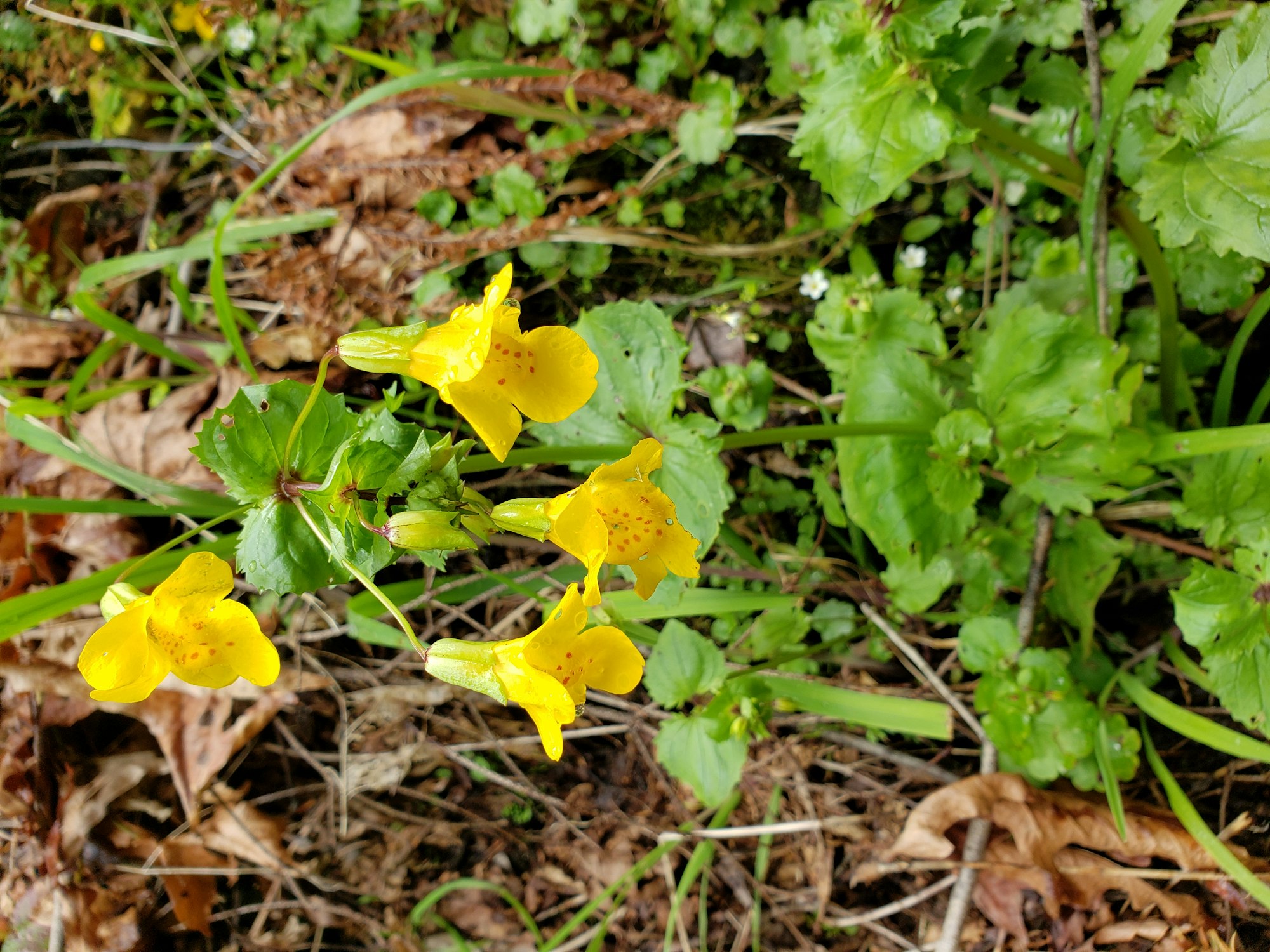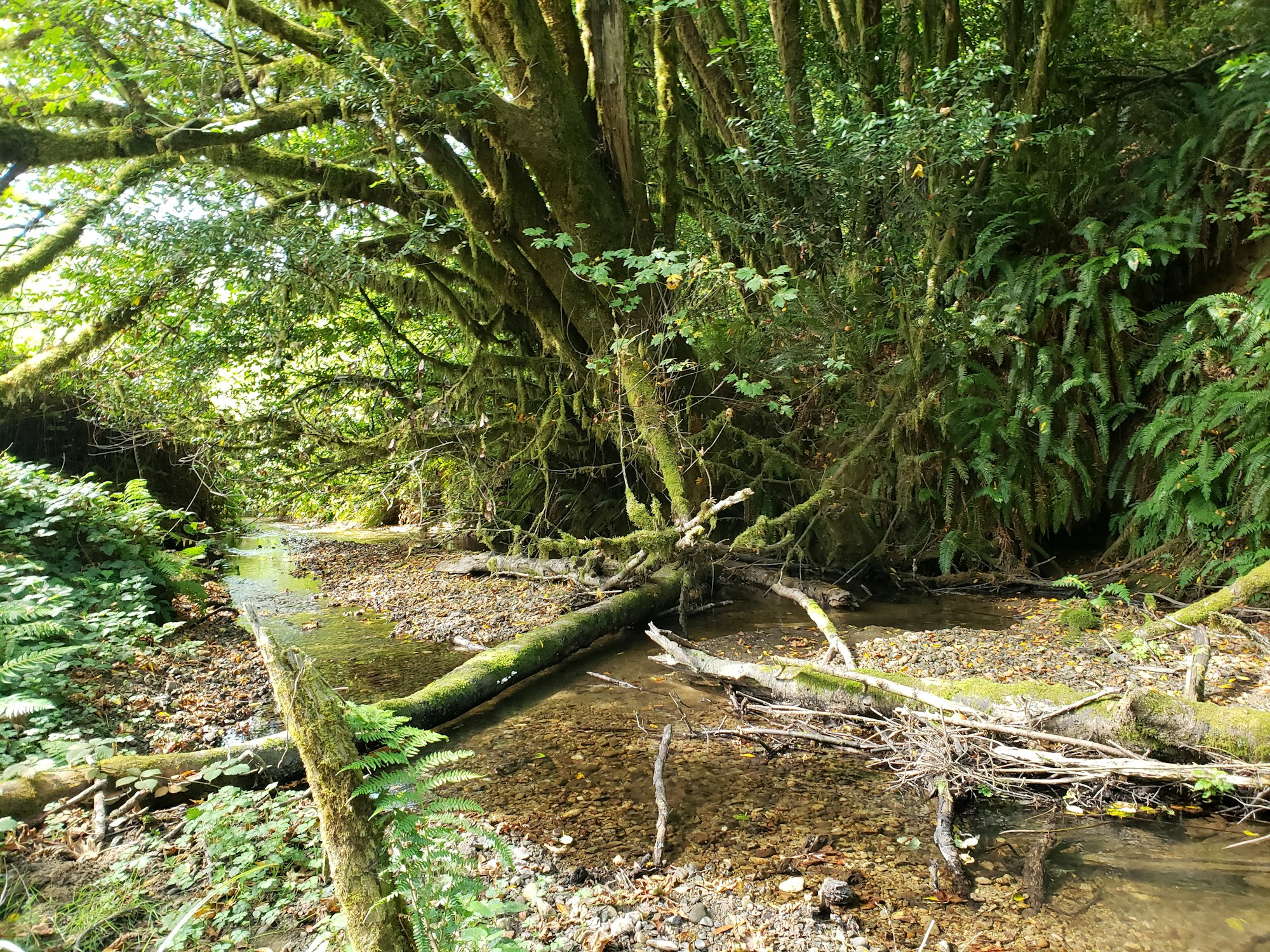Temperature Monitoring
Water temperature affects the productivity and diversity of freshwater ecosystems. Species such as salmon require cold water to thrive. During the summer, warm water stresses and kills juvenile salmon if they can't find locations with cold water to rest and feed. Warm water creates favorable conditions for invasive smallmouth bass, and it also makes our waterways more susceptible to toxic cyanobacteria blooms.
The Coos SWCD monitors water temperature at many locations in the Coquille Basin over the summer. We use the data to inform landowners of the water quality conditions on their land and also to decide where to prioritize water quality improvement work. Making our waterways resilient to droughts and heat waves is important to maintain and improve salmon habitat and clean water. Our primary tool to keep water cool is to protect streamside trees where they exist and to plant more trees along streambanks that are bare or covered with blackberries.
We started temperature monitoring on tributaries of the Lower Coquille River this year and will have a full set of data by December. "Electronic temperature loggers were placed in 19 locations in June 2022. They will be retrieved in October and the water temperature data will be downloaded and graphed" as Water Quality Project Manager Andrew Chione explains. "Once we have the data, we can use it as a tool to locate where water quality can be improved and where conditions are ideal."
It takes a community to take care of our shared water resources. Our water quality monitoring program would not be possible without the landowners who allow us to collect data on streams running through their property. If you are interested in participating in our temperature monitoring program, please call our office and ask for Andrew.
